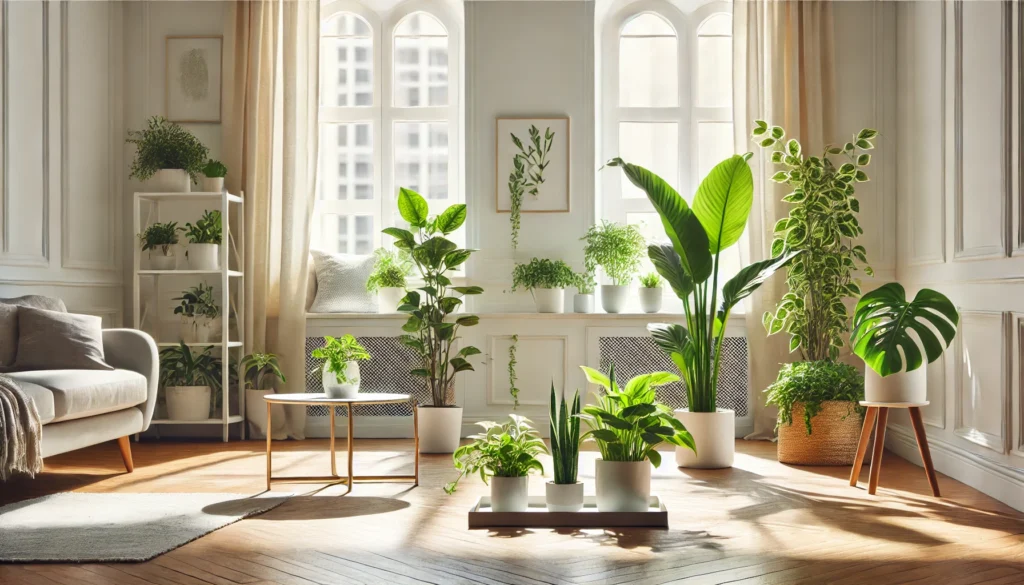
Simple Houseplants to Grow: Easy Indoor Plants for Any Home
Keeping houseplants doesn’t have to be complicated—some thrive with minimal care, making them perfect for beginners or busy plant lovers. Whether you’re looking to add a touch of greenery to your home or improve air quality, simple houseplants to grow can transform any space effortlessly. These low-maintenance plants require little attention yet provide big benefits, from reducing stress to boosting productivity. In this guide, we’ll explore the best indoor plants that are easy to care for, resilient, and adaptable to different environments. Get ready to discover the perfect green companions for your home!
Table of Contents
ToggleWhy Choose Simple Houseplants?
Simple houseplants are the perfect choice for anyone looking to add greenery to their home without the hassle of high-maintenance care. Whether you’re a beginner or a busy plant lover, these plants offer numerous benefits with minimal effort.
Easy to Care For
Simple houseplants thrive with basic care—occasional watering, indirect light, and minimal feeding. Unlike delicate plants that require precise conditions, they can adapt to various indoor environments.
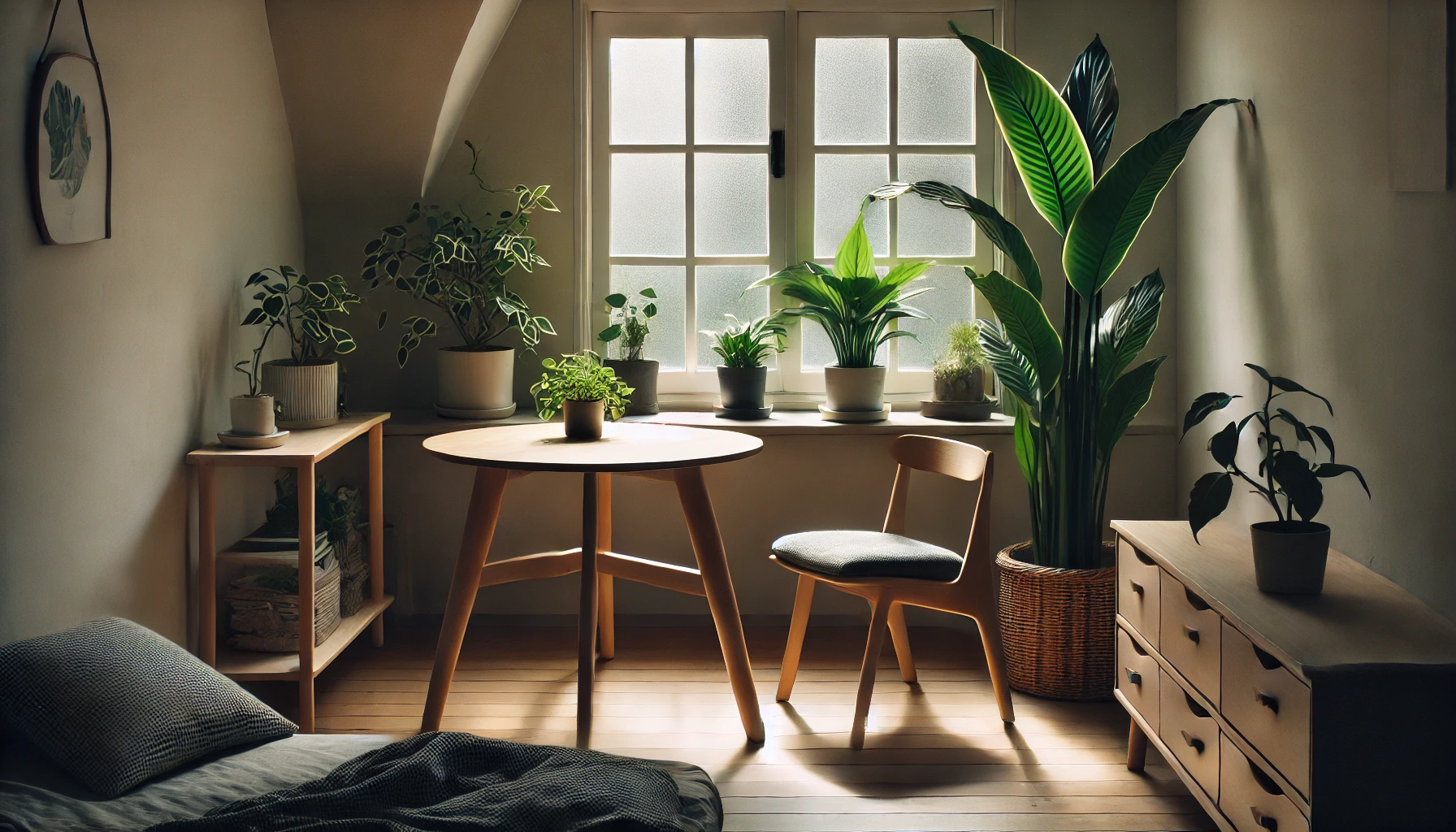
Improve Air Quality
Many houseplants, like pothos and snake plants, help purify the air by removing toxins and increasing oxygen levels. This leads to a healthier and fresher indoor atmosphere.
Boost Mood and Productivity
Having greenery indoors can reduce stress, enhance focus, and promote relaxation. Studies show that plants create a calming environment, making them perfect for homes and workspaces.
Add Natural Beauty
Houseplants bring life and color to any space. From lush green foliage to unique textures, they effortlessly enhance your décor, making rooms feel more inviting and vibrant.
Ideal for Small Spaces
Compact and versatile, simple houseplants fit anywhere—on shelves, desks, or hanging baskets. They provide a touch of nature without taking up too much room.
Choosing simple houseplants is a smart and rewarding way to enjoy the beauty of nature indoors with minimal effort. Whether you want a healthier home, a productivity boost, or an aesthetic upgrade, these plants make it easy to achieve all three.
Top 10 Simple Houseplants to Grow
Growing houseplants doesn’t have to be complicated. Some plants are incredibly easy to care for, making them perfect for beginners or anyone looking for low-maintenance greenery. Here are the top 10 simple houseplants to grow:
Snake Plant (Sansevieria)
One of the toughest houseplants, the snake plant thrives on neglect. It can tolerate low light, irregular watering, and poor air quality, making it ideal for busy plant owners.
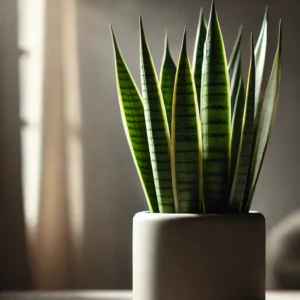
Pothos (Epipremnum aureum)
A fast-growing vine with heart-shaped leaves, pothos can thrive in almost any indoor condition. It requires minimal watering and can survive in both low and bright light.
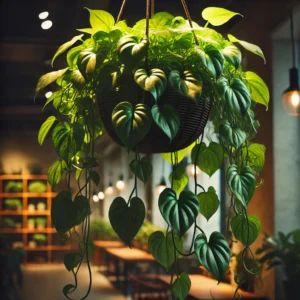
Spider Plant (Chlorophytum comosum)
This resilient plant produces arching green and white leaves and tiny baby spider plants. It adapts to different light conditions and purifies indoor air.
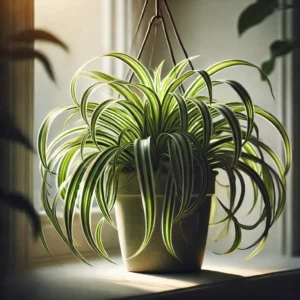
ZZ Plant (Zamioculcas zamiifolia)
A nearly indestructible plant, the ZZ plant requires minimal watering and can survive in low light. Its glossy, dark green leaves add elegance to any space.
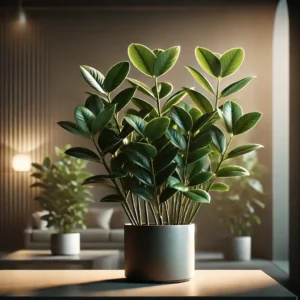
Peace Lily (Spathiphyllum)
Known for its beautiful white blooms, the peace lily is a forgiving plant. It thrives in moderate light and only needs watering when the soil feels dry.
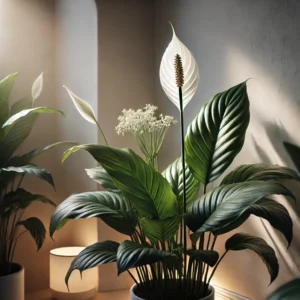
Aloe Vera
A low-maintenance succulent with healing properties, aloe vera needs bright, indirect light and occasional watering. It’s perfect for sunny windowsills.
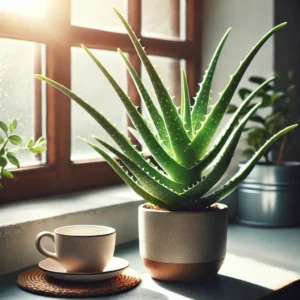
Cast Iron Plant (Aspidistra elatior)
As its name suggests, the cast iron plant is nearly indestructible. It can handle low light, poor air quality, and irregular watering.
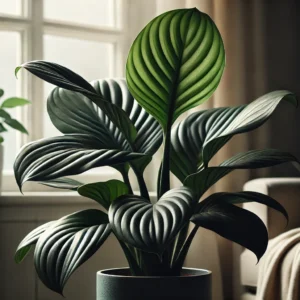
Chinese Evergreen (Aglaonema)
This attractive plant comes in various shades of green and pink. It’s drought-tolerant and can adapt to different light levels.
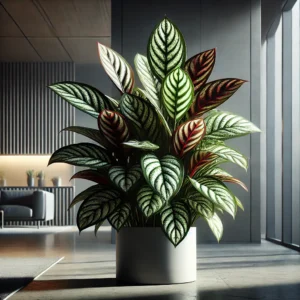
Jade Plant (Crassula ovata)
A slow-growing succulent, the jade plant stores water in its thick leaves, making it highly drought-tolerant. It thrives in bright, indirect light.
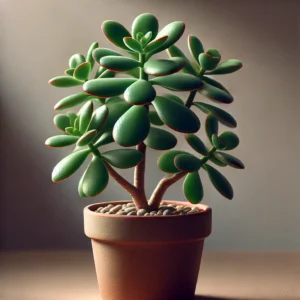
Rubber Plant (Ficus elastica)
With its bold, glossy leaves, the rubber plant is both stylish and easy to maintain. It grows well in medium to bright light and needs watering only when the soil is dry.
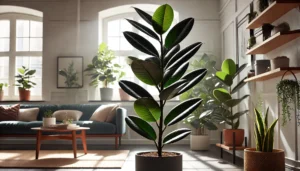
These plants are perfect for beginners and busy individuals, bringing natural beauty and cleaner air into any home with minimal effort.
Essential Care Tips for Easy Houseplants
Caring for houseplants doesn’t have to be complicated. With the right approach, even beginners can keep their plants thriving. Here are key tips to ensure your houseplants stay healthy and beautiful.
Choose the Right Spot
Placement matters. Most easy-care houseplants prefer bright, indirect light, but some, like snake plants and pothos, can tolerate low light. Avoid direct sunlight for delicate leaves to prevent scorching.
Water Wisely
Overwatering is the most common mistake. Stick to these guidelines:
- Check the soil: Insert your finger about an inch deep. If it feels dry, it’s time to water.
- Use the right amount: Water until it drains from the bottom—never let plants sit in standing water.
- Adjust for the season: Water less in winter when growth slows down.
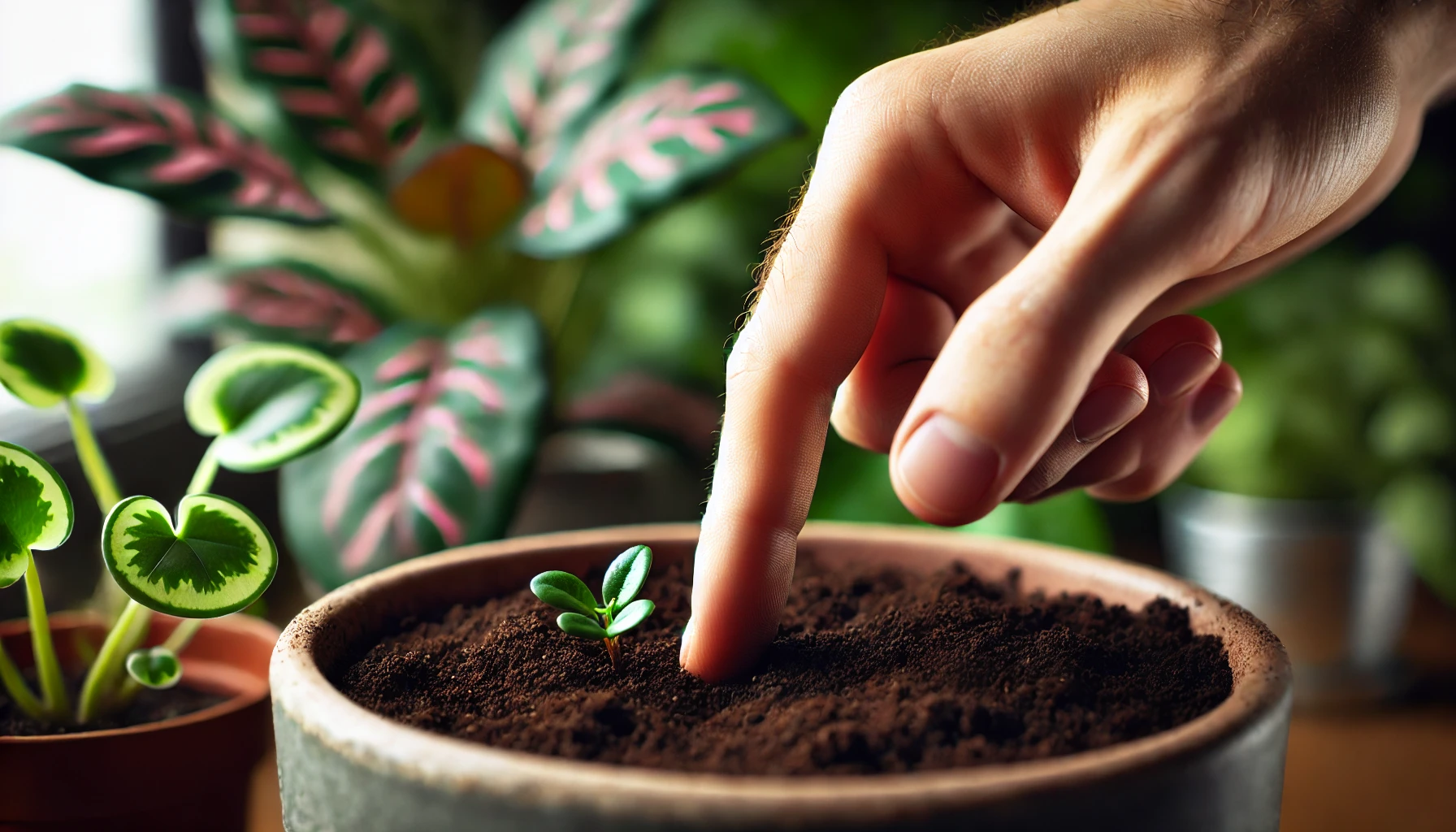
Ensure Proper Drainage
Good drainage prevents root rot. Always use pots with drainage holes and well-draining soil. For added protection, place a layer of pebbles at the bottom of the pot.
Feed for Growth
Houseplants need nutrients to thrive. Use a balanced liquid fertilizer once a month during the growing season (spring and summer). Skip fertilizing in winter when plants are dormant.
Control Humidity & Temperature
Most houseplants prefer humidity between 40-60% and temperatures between 65-75°F (18-24°C). If your home is dry, especially in winter, boost humidity with:
- A pebble tray filled with water
- A room humidifier
- Grouping plants together to create a microclimate
Prune & Clean Regularly
Remove yellowing or dead leaves to encourage new growth. Dust leaves occasionally with a damp cloth to help plants absorb light better. Trimming leggy growth promotes a fuller shape.
Watch for Pests
Common pests like spider mites, aphids, and mealybugs can harm plants. Inspect leaves regularly and wipe off pests with a mild soap and water solution or neem oil spray.
By following these essential care tips, your houseplants will stay vibrant, healthy, and easy to maintain. Whether you’re a beginner or an experienced plant lover, these simple steps make plant care a breeze.
Troubleshooting Common Houseplant Problems
Even with the best care, houseplants can develop issues. Here’s how to identify and fix the most common problems to keep your plants thriving.
Yellowing Leaves
Cause: Overwatering, underwatering, or nutrient deficiencies.
Fix: Check soil moisture—water only when the top inch is dry. If the issue persists, fertilize with a balanced plant food.
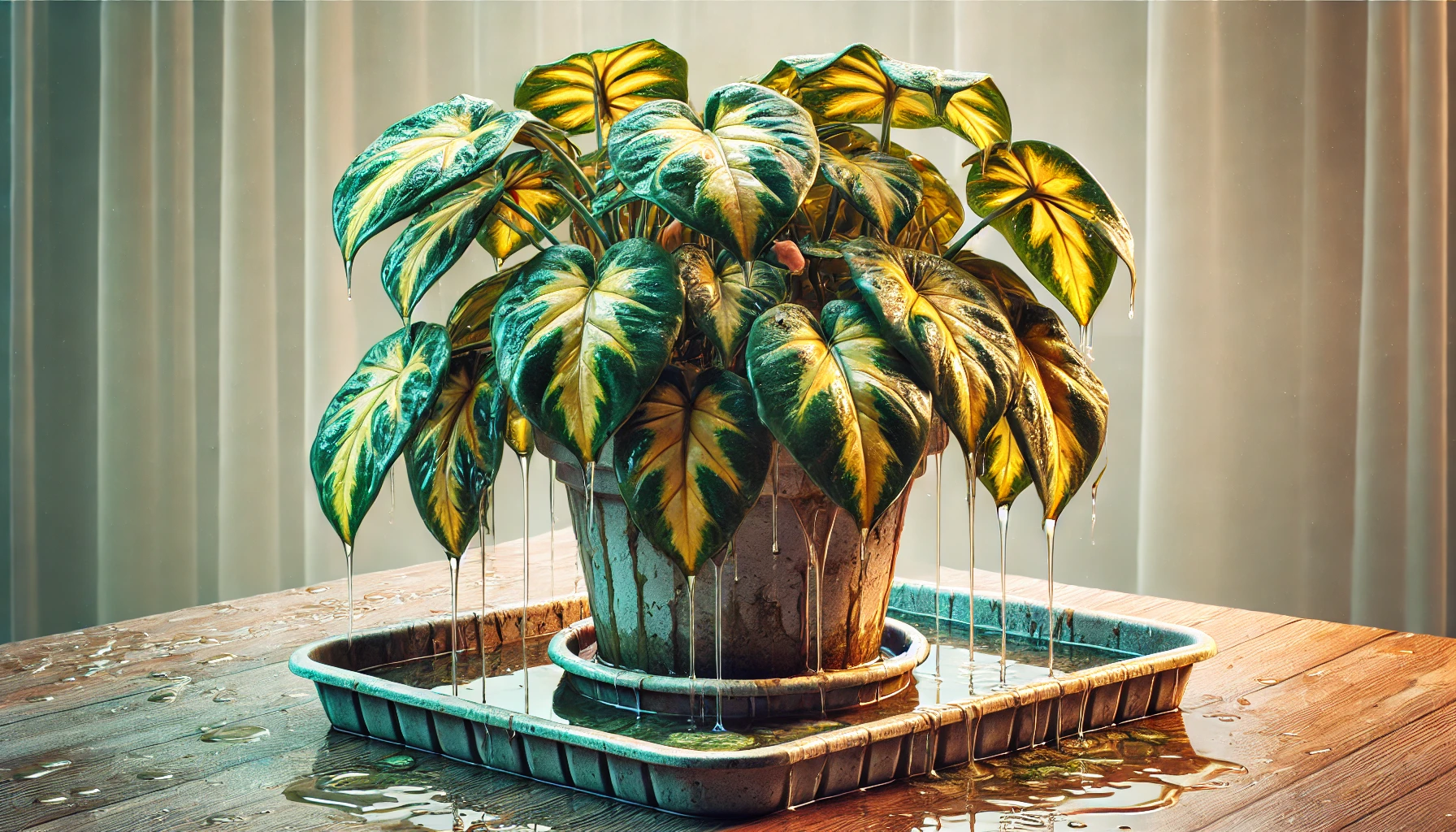
Drooping or Wilting Leaves
Cause: Lack of water, root rot, or temperature stress.
Fix: Water thoroughly if the soil is dry. If the soil is soggy, improve drainage and trim rotten roots. Keep plants away from temperature extremes.
Brown Leaf Tips
Cause: Low humidity, underwatering, or excess fertilizer.
Fix: Mist plants, use a humidity tray, or place a humidifier nearby. Water when needed and avoid over-fertilizing.
Leggy Growth (Tall, Sparse Stems)
Cause: Insufficient light.
Fix: Move the plant to a brighter spot or supplement with a grow light. Rotate the plant regularly to ensure even growth.
Spots or Mold on Leaves
Cause: Fungal or bacterial infections.
Fix: Increase air circulation, avoid wetting leaves, and remove affected foliage. Use a natural antifungal spray if needed.
Pests (Aphids, Spider Mites, Mealybugs)
Cause: Dry air, weak plants, or infested new plants.
Fix: Inspect plants regularly. Remove pests with insecticidal soap or neem oil. Keep humidity balanced to deter infestations.
Slow or No Growth
Cause: Lack of nutrients, poor lighting, or dormancy.
Fix: Fertilize during the growing season, increase light exposure, and be patient during winter dormancy.
By addressing these common issues promptly, your houseplants will stay healthy and vibrant year-round.
How to Style Your Home with Simple Houseplants
Houseplants are a powerful yet effortless way to elevate your home’s interior. With the right selection and placement, they can add life, color, and tranquility to any space. Here’s how to style your home with a simple houseplant approach.
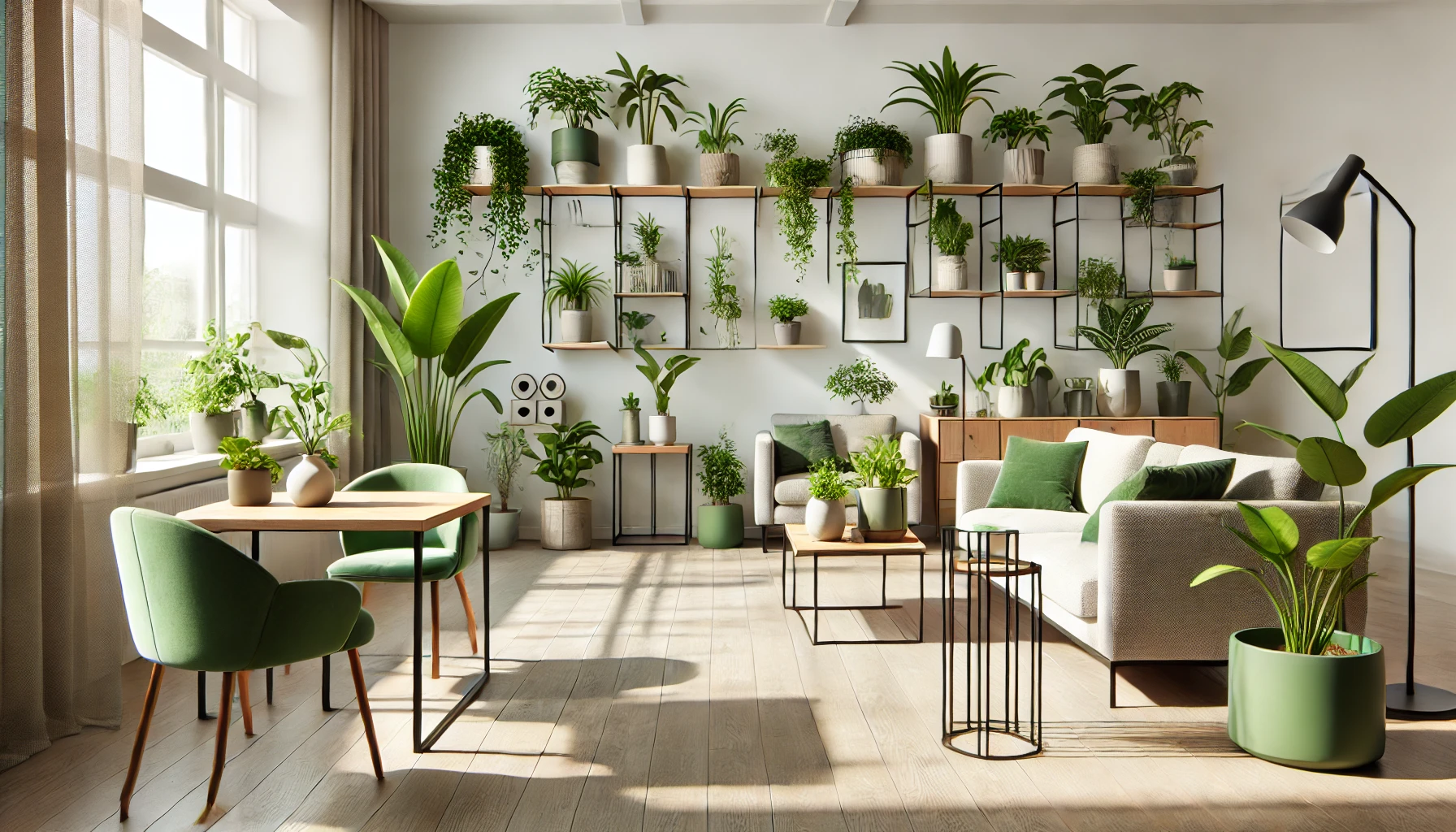
Choose Low-Maintenance Plants
Opt for easy-care plants like pothos, snake plants, or ZZ plants. These require minimal watering and adapt well to different light conditions, making them perfect for any home.
Match Plants with Room Aesthetics
Consider your interior design when selecting houseplants:
- Modern spaces: Go for sleek, structured plants like fiddle-leaf figs or rubber plants.
- Bohemian decor: Use trailing plants like ivy or string of pearls for a relaxed vibe.
- Minimalist homes: Stick to one or two statement plants like a monstera or peace lily.
Use Planters as Decor Pieces
Choose stylish pots that complement your home’s color scheme. Matte ceramics, woven baskets, and metallic pots can enhance your decor while keeping your plants healthy.
Maximize Small Spaces
Even tiny areas can benefit from greenery:
- Place small succulents on shelves or desks.
- Hang plants from the ceiling using macrame holders.
- Use vertical plant stands to create a lush corner without taking up floor space.
Improve Ambiance with Strategic Placement
- Entryway: A welcoming snake plant or peace lily.
- Living room: A statement fiddle-leaf fig or monstera.
- Bedroom: Calming plants like lavender or aloe vera for better air quality.
- Bathroom: Humidity-loving ferns or orchids.
Group Plants for a Layered Look
Combine different plant heights, textures, and colors for a natural, organic feel. A mix of tall floor plants, bushy tabletop plants, and trailing vines creates visual interest.
Rotate Plants for Fresh Energy
Switch plants between rooms every few months to refresh your space while ensuring they receive balanced light exposure.
By using these simple yet effective styling tips, you can transform your home into a green, inviting space effortlessly. Houseplants not only beautify your surroundings but also enhance well-being, making them a must-have in any home.
Bringing greenery into your home doesn’t have to be complicated. With the right simple houseplants to grow, even beginners can enjoy the beauty and benefits of indoor plants without the stress of high maintenance. From hardy snake plants to trailing pothos, these easy-care options thrive with minimal attention, making them perfect for any space.
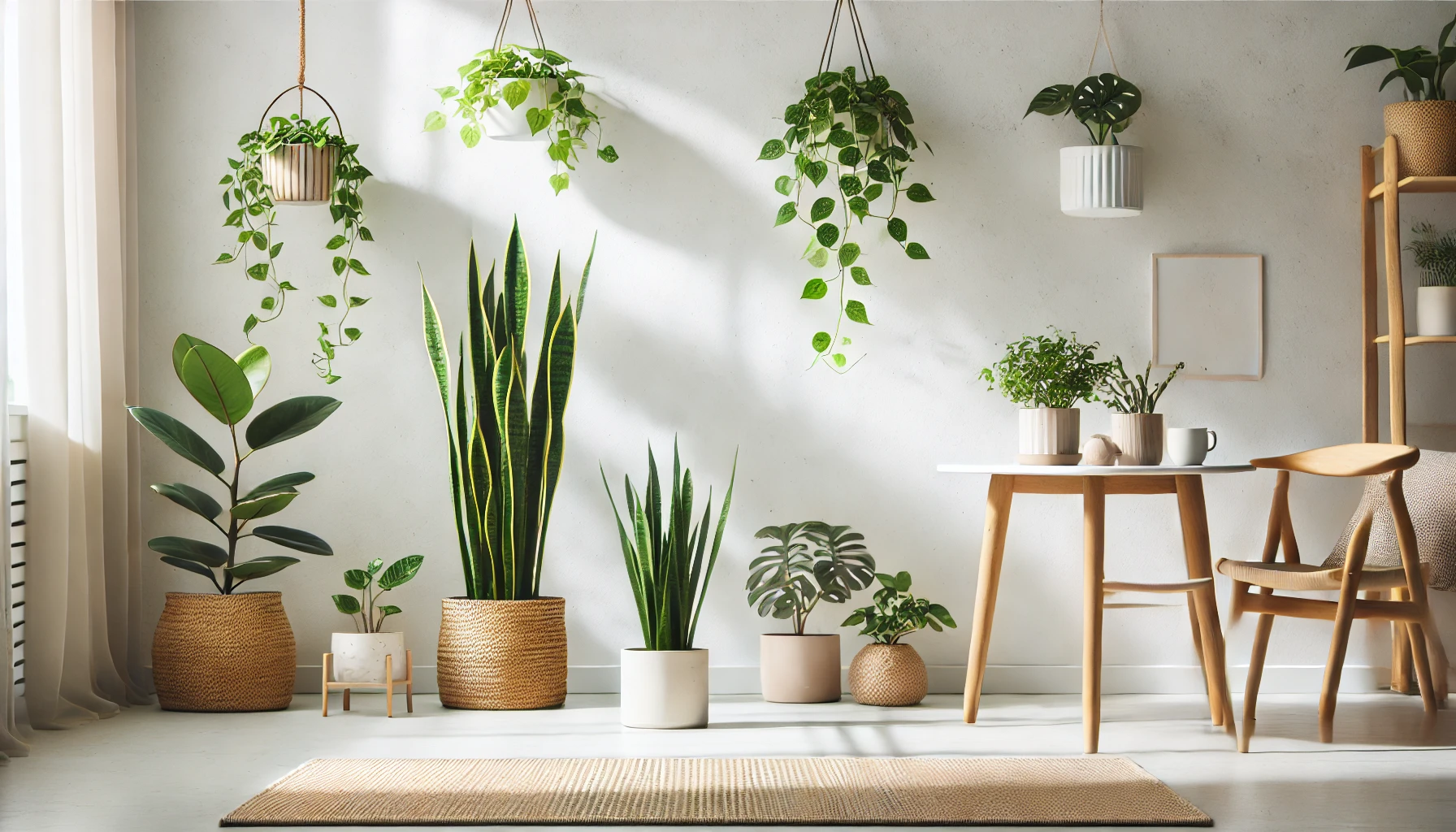
If you’re new to houseplants, start with just one or two from our list and gradually expand your indoor garden. With a little care and the right conditions, you’ll soon have a thriving, lush environment that enhances your home. What are your favorite easy-to-grow houseplants? Share your experiences in the comments!
Frequently Asked Questions(FAQ)
What are the best simple houseplants to grow for beginners?
Some of the easiest houseplants for beginners include snake plants, pothos, spider plants, ZZ plants, and peace lilies. These plants require minimal care and can thrive in various indoor conditions.
How often should I water my houseplants?
The watering frequency depends on the plant type, but most simple houseplants to grow need watering once a week or when the top inch of soil feels dry. Overwatering is a common issue, so always check soil moisture before watering.
Can simple houseplants grow in low light?
Yes, several houseplants thrive in low-light conditions, including the snake plant, ZZ plant, and Chinese evergreen. These plants can survive with minimal sunlight, making them perfect for homes with limited natural light.
What are the best low-maintenance houseplants for air purification?
Some of the best air-purifying houseplants include peace lilies, snake plants, pothos, and rubber plants. These plants help remove toxins from the air while requiring little upkeep.
Do simple houseplants need fertilizer?
While not always necessary, fertilizing houseplants once every 1-2 months during the growing season (spring and summer) can promote healthy growth. Use a balanced, water-soluble fertilizer at half strength.
How can I prevent pests on my houseplants?
To prevent pests, keep your plants clean by wiping the leaves regularly and ensuring proper airflow. If pests appear, treat them with insecticidal soap or neem oil.
What is the easiest flowering houseplant to grow?
The peace lily is one of the easiest flowering houseplants to grow. It produces beautiful white blooms with minimal care and thrives in low to medium light.
Can I grow simple houseplants in small spaces?
Yes! Many simple houseplants, like pothos, aloe vera, and spider plants, can be grown in small spaces using hanging planters, wall-mounted shelves, or compact pots.
Why are my houseplant leaves turning yellow?
Yellowing leaves can be caused by overwatering, underwatering, or poor drainage. Check the soil moisture and adjust your watering routine accordingly.
How do I know if my houseplant needs repotting?
If roots are growing out of the drainage holes or the plant has become root-bound, it’s time to repot. Choose a pot that is 1-2 inches larger in diameter and use fresh potting soil.

